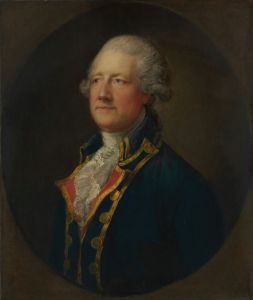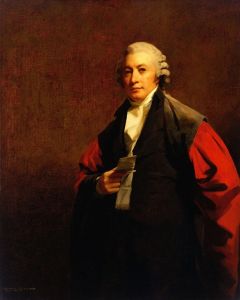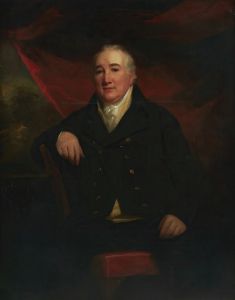
William Forsyth
A hand-painted replica of Sir Henry Raeburn’s masterpiece William Forsyth, meticulously crafted by professional artists to capture the true essence of the original. Each piece is created with museum-quality canvas and rare mineral pigments, carefully painted by experienced artists with delicate brushstrokes and rich, layered colors to perfectly recreate the texture of the original artwork. Unlike machine-printed reproductions, this hand-painted version brings the painting to life, infused with the artist’s emotions and skill in every stroke. Whether for personal collection or home decoration, it instantly elevates the artistic atmosphere of any space.
William Forsyth by Sir Henry Raeburn is a portrait painting created by the renowned Scottish artist Sir Henry Raeburn (1756–1823). Raeburn is celebrated for his skill in portraiture, particularly his depictions of prominent figures in 18th and early 19th-century Scotland. This painting is one of many works that showcase his mastery of capturing the character and presence of his sitters.
The subject of the painting, William Forsyth, was a Scottish lawyer and legal writer. He was a member of the Faculty of Advocates, the professional body of lawyers in Scotland, and contributed to the legal and intellectual life of his time. Forsyth's exact birth and death dates are not widely documented, but he was active during the late 18th and early 19th centuries. His inclusion as a subject in Raeburn's work suggests his prominence within Scottish society during this period.
Raeburn's style in this portrait reflects his characteristic approach to portraiture, which often emphasized naturalism and a sense of immediacy. He was known for his ability to depict his sitters with a lifelike presence, often using a restrained color palette and dramatic lighting to focus attention on the subject's face and expression. In this painting, Forsyth is portrayed with dignity and poise, reflecting his status as a respected figure in his profession.
The painting is an example of Raeburn's ability to balance realism with artistic interpretation, capturing not only the physical likeness of his subjects but also their personality and social standing. Raeburn's portraits often avoided excessive embellishment, instead favoring a direct and honest representation of his sitters. This approach helped establish him as one of Scotland's most important portrait painters.
The exact date of the painting is not definitively recorded, but it is believed to have been created during Raeburn's mature period, likely in the late 18th or early 19th century. During this time, Raeburn was at the height of his career, receiving numerous commissions from Scotland's elite, including lawyers, politicians, and members of the aristocracy.
Today, William Forsyth by Sir Henry Raeburn is recognized as an important work within Raeburn's oeuvre. It is held in a public or private collection, though specific details about its current location or ownership are not readily available in historical records. The painting continues to be appreciated for its artistic quality and as a representation of Scotland's cultural and professional history during Raeburn's era.

















